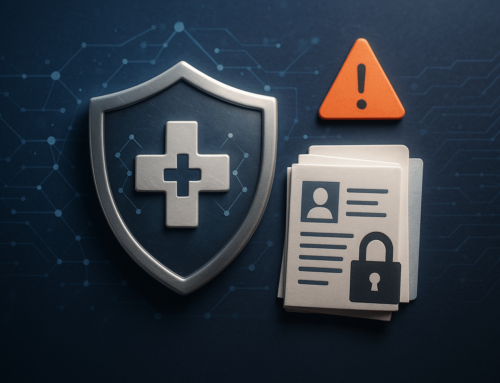In today’s world, healthcare organizations are continually targeted by hackers for the sensitive information they hold on their patients. To ensure the safety of your patients’ protected health information (PHI) and reduce your practice’s risk, it is important to implement a HIPAA risk management program.
HIPAA Risk Management: How to Determine Your Areas of Risk
To implement HIPAA risk management, and adequately safeguard PHI, it is essential to determine your areas of risk. The following are questions that you should look to to determine whether or not you are sufficiently securing patient data.
◈ Have you conducted a HIPAA risk analysis and are the results documented?
Each year, you must conduct a HIPAA risk analysis. By conducting a risk analysis, gaps in your organization’s safeguards can be identified. Gap identification is an essential component of HIPAA risk management as it allows you to address your organization’s vulnerabilities with remediation efforts.
To be HIPAA compliant, your risk analysis and your remediation plans must be documented. Compliancy Group allows you to complete and document your required risk analysis and remediation plans, along with other required self-audits. By working with Compliancy Group, you don’t have to do it on your own.
Find out more about how Compliancy Group can help you conduct your risk analysis.
◈ Do you have documented policies and procedures in line with the HIPAA Privacy, Security, and Breach Notification Rules?
Policies and procedures ensure that you have measures in place to conduct business in a HIPAA compliant manner. The HIPAA Privacy Rule dictates the proper uses and disclosures of PHI. To ensure compliance with this Rule, policies and procedures must dictate the proper uses and disclosures of PHI by your organization, and your employees.
The HIPAA Security Rule requires administrative, physical, and technical safeguards to be implemented. Implementing safeguards enables the confidentiality, integrity, and availability of PHI to be maintained (another requirement of the Security Rule). Having security policies and procedures allows you to implement these safeguards.
The HIPAA Breach Notification Rule requires organizations working in healthcare to report a breach should one occur. The Department of Health and Human Services (HHS) requires organizations to have a means to report breaches anonymously. To ensure compliance with this Rule, it is important that employees are aware of how they may do this, which is why this must be dictated in your organization’s policies and procedures.
Compliancy Group facilitates the implementation of custom policies and procedures for its clients. These written documents are stored in our HIPAA compliance tracking software so that they are readily accessible. We also have a means for employees to report breaches anonymously through our software.
Find out more about how Compliancy Group can help you implement policies and procedures.
◈ Do you conduct annual HIPAA training including HIPAA security awareness training?
Annual employee training is not only a requirement of HIPAA, it also allows employees to better protect your organization. HIPAA training must included HIPAA basics (what are the Privacy, Security, and Breach Notification Rules — and how must they comply with them), HIPAA security awareness training (including how to recognize a phishing email), your organization’s policies and procedures, and the proper use of social media in the workplace. HIPAA requires employees training to be documented and tracked.
Compliancy Group provides clients with all of the required HIPAA training. All employee training can be tracked through our compliance software. Employee training is conducted through a series of short engaging videos, with quizzes at the end of each. Throughout the training, employees legally attest that they have read and understood the training material. If they do not understand something, administrators are alerted so that the employee can receive further training.
Find out more about how Compliancy Group can help you with your employee HIPAA training.
◈ Have you identified all of your business associates and do you have signed business associate agreements with them?
Identifying all of your business associates, and having them sign business associate agreements (BAAs), allows you to ensure that they are protecting the PHI that they create, receive, transmit, store, or maintain on your behalf. A BAA is a legal contract that dictates the protections your business associates are required to have in place to do business with you. HIPAA requires you to review your BAAs each year, and make adjustments if there are changes in your business relationship.
Compliancy Group provides clients with everything they need for business associate management. Within our software, all of your business associates are input, and business associate agreements are sent to them to be signed. Once they have signed the agreement, a copy of the document is stored in our software within your organization’s profile.
Find out more about how Compliancy Group enables business associate management.
◈ Do you encrypt all of your devices that have contact with PHI?
Encryption is a key component of HIPAA risk management. Encryption prevents unauthorized access to PHI by masking the sensitive information. Encrypted data can only be read with a decryption key, making it the most effective form of PHI protection.
Compliancy Group works with security professionals across the country. Clients that need assistance implementing advanced security tools will be referred to one of our partners so that they may provide you with the tools you need to secure your patients’ PHI.









